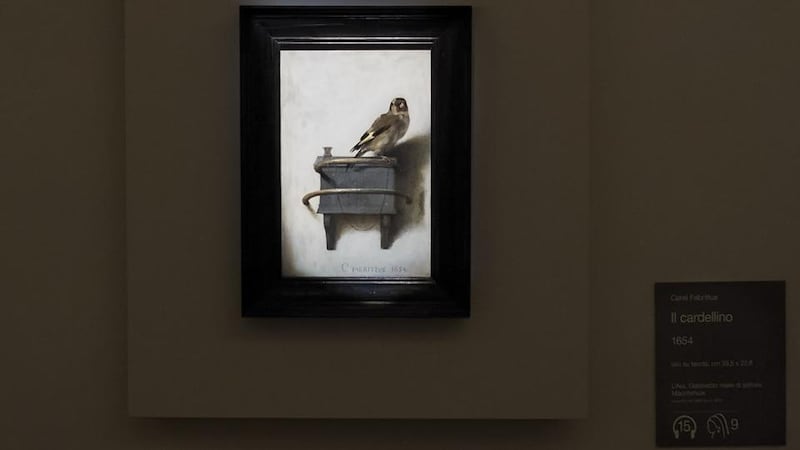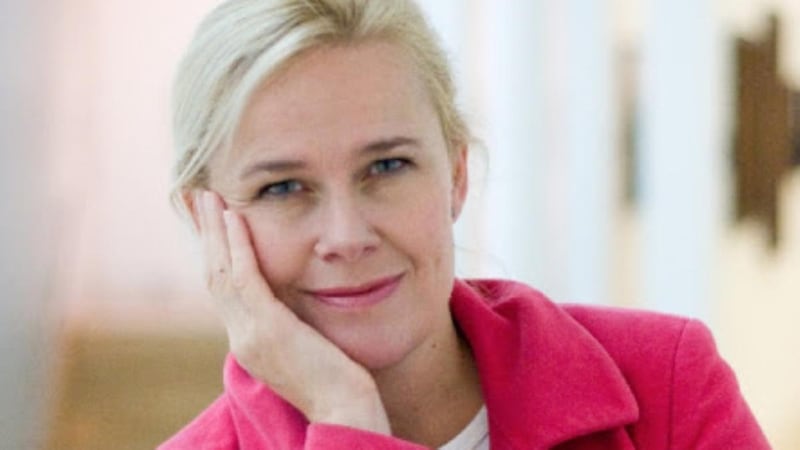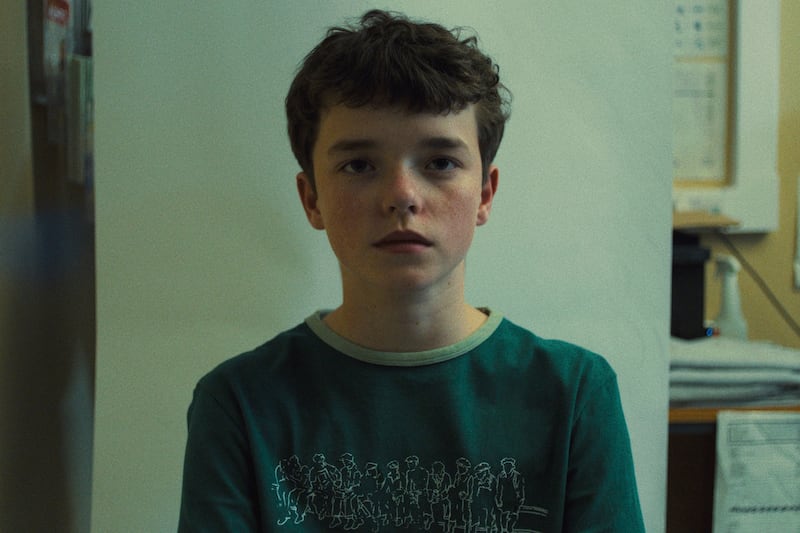In 2014, US writer Jenny Offill published Dept. of Speculation, a fragmented, incendiary novel about domesticity and creativity. The frustrated protagonist was hemmed in by caregiving and vanishing writing time: “My plan was to never get married. I was going to be an art monster instead… because art monsters only concern themselves with art, never mundane things.”
When writer Lauren Elkin first read this phrase, she felt “a thunderbolt” of recognition. Art Monsters: Unruly Bodies in Feminist Art was written during pregnancy, new motherhood and the pandemic. These interruptions fed into the writing process and impacted on the book’s shape: snatched increments of available time evolved into solid ekphrastic pages.
With vast ground to cover, the scope of the book is limited to “a constellation of correspondences around the radical feminist art of the 1970s, reading forwards and backwards from this decade”. Its motivation has common ground with Linda Nochlin’s landmark 1970s book, Why Have There Been No Great Women Artists? (Elkin contends they’ve been “busy serving great men”) alongside questions of how to address the materiality of the body through art.
One key work is Carolee Schneemann’s Interior Scroll, a performance piece where the artist read from a scroll drawn from her vagina, chiding critics who “couldn’t look” at her films. A corporeal chastisement about her work not being taught at film schools, a kind of dismissal based on its bodily praxis. Many of Schneemann’s contemporaries – Kathy Acker, Lynda Benglis, Ana Mendieta – experienced similar revulsion and disparagement. In 1968 when Fuses, a tender, hazy film featuring Schneemann and her partner having sex, was shown at Cannes, 40 men in the audience cut up their seats with razors.
Adolescence: Five truths about our teenage boys we need to address urgently
Her ‘no’ was clear. She did not want to go home with him. Still he went on. And on
The 100 best Irish books of the 21st century: No 25 to No 1
‘One of the lowest points of my life’: Elizabeth Day on marriage breakdown, IVF and How To Fail
Elkin weaves across the decades, writing into a current culture of rowbacks (Roe-backs?) in women’s lives – abortion, bodily autonomy and LGTBQ rights. To investigate gendered expectations of women as artists, she draws not just on visual makers, but writers and thinkers from Virginia Woolf (frequently circling back to Professions for Women) and Julia Kristeva’s linking of shame and abjection.
Cumming’s interest in art was fostered by her father, an artist who taught by day to pay the bills, and painted late at night on little sleep
Elkin’s “Thunderbolt” echoes Laura Cumming’s titular Thunderclap, a reference to a catastrophic act that sets her book in motion. In 1654, a gunpowder explosion in the Dutch town of Delft was heard 70 miles away, destroying property and killing many people. One victim was promising young painter Carel Fabritius, who was pulled alive from the wreckage of his studio but died later. Only 13 of his artworks survive, most famous among them is The Goldfinch (readers might recognise the trompe l’oeil cover from Donna Tarrt’s novel of the same name). Born in 1622 in Middenbeemster, Fabritius had a difficult life before the calamitous event of 1654. Impoverished, he survived by painting public signs and by 21 was a widower and his three infant children were dead.

Cumming’s interest in art was fostered by her father, an artist who taught by day to pay the bills, and painted late at night on little sleep. Like Fabritius, he also died prematurely and permeates these pages through quotations, his paintings and buckled tubes of paint “the gunmetal grey of old shell casings” that Cumming still has.
Her Fabritius obsession began in London, where she moved as a young woman and regularly visited the National Gallery to see A View of Delft, With a Musical Instrument Seller’s Stall. The figure of the seller, possibly modelled on Fabritius himself, is tucked into a corner while the city bends around him. Cumming feels connected to this peripheral outsider in a strange city “on the brink of something, or perhaps nothing at all”. This habit of repeatedly returning to look at the work is a comfort. “Paintings are reliable; they are not supposed to let us down. They absorb all our looking and our feelings without ever changing, unlike living beings.”
Alongside the story of Fabritius and Cumming’s father, Thunderclap offers a fascinating insight into Dutch painting and broader Netherlandish society through its paintings, from housing to infrastructure, poverty and family life. From as early as the 1600s, art was bought widely – not just by merchants and bankers but carpenters and brewers. One estimate says 600 to 700 artists produced 1.3 to 1.4 million paintings mid-century, but some scholars think it’s much higher. This may imply that the Dutch golden age art was more concerned with volume than originality, with domestic still life and landscapes dominating. For Cumming, such works are not acts of “transcription” but “hymns to everyday existence”. She’s an excellent guide: her assessments are astute, the sentences bloom vividly, particularly when writing about Adriaen Coorte’s startling, luminous paintings of asparagus.

Monstrosity in art is rooted in making the work no matter what. Its centrality is a dogged commitment to process, regardless of class and economics, critical dismissal, or the responsibilities of work and caregiving (which Art Monster also explores). Elkin believes monstrosity “dwells more in the surprise of the work, than the personal life of the artist making it”. Fabritius’s monstrosity is partly rooted in his outsiderness and that he was not considered – at the time – in the same regard as his contemporaries. Had he lived, he might have become a household name like Rembrandt and Vermeer (the latter owned some of his paintings and Fabritius was apprenticed to the former).
There is a connective line between Thunderclap and John Berger’s Ways of Seeing in imploring us to look, and look again. Cumming urges the reader to reconsider paintings they admired, no matter how familiar, to find something new, often spurred to this by events in her own life. Her father’s desire to look closely at the world intensified when he acquired a microscope; and while writing Thunderclap her daughter damaged her eyes while taking a photograph of the sun, resulting in tritanopia, prompting an exploration of how we perceive colour.
Elkin also incorporates memoir elements (the difficulties of writing as a parent of a small child) but is mindful of writing outside of her white, middle-class experience. There are thoughtful chapters on the work of Betye Saar (mother of the singular Lezley Saar), who struggled against both sexism and racism; Kara Walker, whose work has occupied the Tate’s Turbine Hall; and the brilliant anti-Empire, droll domesticity of British-Indian artist Sutapa Biswas. Elkin combines looking at each piece as a viewer, while interrogating the inequalities and intersectionality that made the making of such work more difficult. (There is an interesting digression exploring a dispute between Saar and Walker.) The writing is occasionally academic and theoretical but never to the detriment of the points being made.
If Fabritius’s work disappeared because of an explosion, many women artists could not attribute their anonymity or lack of profile to one cataclysmic event, rather than years of canonical neglect. Not every piece of art or writing by women is feminist and in an essay by Rachel Cusk on painters Celia Paul and Cecily Brown, she asks: “Can a woman artist – however virtuosic and talented, however disciplined – ever attain a fundamental freedom from the fact of her own womanhood?”
She is mindful of the suggestion that all art by women is equated with feminism, or that a female-identifying artist must make this the fulcrum of her work
Cumming is also wary of the concept of a binary feminine subject, challenging the idea that 17th-century Dutch female artist only painted flowers, like “the queen of hot colour” Maria van Oosterwijck. Others turned to self-portraiture, not necessarily as a rejection of the male gaze, but as a means of controlling how they and their work were seen. Elkin points out that female artists were barred from drawing nudes until the 19th century, and by painting flowers and fruit, their art “became identified with femininity and dismissed as small, unimportant, formulaic”.
She is similarly mindful of the suggestion that all art by women is equated with feminism, or that a female-identifying artist must make this the fulcrum of her work. A schism in 1970s feminism arose between those who felt that using the body was transgressive, and those who criticised artists such as Helen Chadwick for narcissism and colluding with patriarchy. Of Hannah Wilke, Elkin concludes: “When she was beautiful, they told her to stop taking her clothes off. When she was dying, they applauded the bravery of taking off her clothes.”
The modality of both works is naturally based on thorough, dogged research, as well as an accrual of years of looking and thinking about art; of balancing the role of interested viewer with documentarian. These writers are aware of the impossibility of representing a whole world of art and settle on distinct parameters, which sharpens each hypothesis.
Subjectivity is at the core of individual engagement with art, and it’s the strength of the well-considered arguments (and personal reactions to the work) that makes both books so engaging. Elkin creates her own kind of écriture féminine, a new language of women’s creativity. “Paintings can take you anywhere,” writes Cumming, “but they are also a land in themselves, a society, a place to be.”
As curators, Cumming and Elkin have created an investigative, thought-provoking space, reminding us that looking at a great work of art can begin a lifelong thunderclap of obsession.
Sinéad Gleeson is the author of Constellations: Reflections From Life
Further reading
The Lives of The Artists by Susan Finlay (JOAN Publishing)
This arch anti-memoir of life as an artist is both comic and fascinating, as the narrator navigates personal and economic hurdles to sustain a creative life. JOAN specialises in interdisciplinary writing and is publishing really interesting, risk-taking work.
The Story of Art Without Men by Katy Hessell
A feminist riposte to Ernst Gombrich’s landmark The Story of Art, this is an encyclopaedic, whistle-stop trawl through famous and unknown female artists. Hessell, who runs the Great Women Artists podcast, drops many breadcrumbs that should steer you to seek out new/unfamiliar names.
The Other Side: Women, Art and the Spirit World by Jennifer Higgie
This work by former Frieze editor Higgie looks at art through the medium of spiritualism, surrealism and the occult, tracing a line through the work of talented artists who were dismissed for their interest in these intersections.














